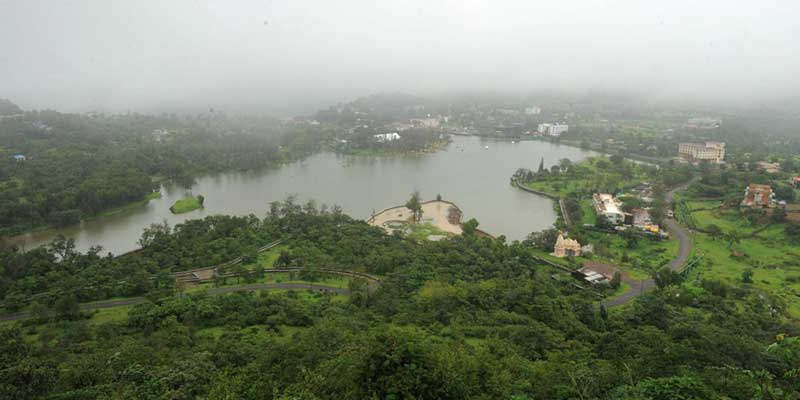- India
- Apr 28
Explainer - What is eco-sensitive zone (ESZ)?
• The Supreme Court has modified its 2022 order which directed that each protected forest such as national parks and wildlife sanctuaries must have an eco-sensitive zone (ESZ) of one kilometre.
• On June 3, 2022, the Supreme Court directed all national parks and wildlife sanctuaries falling under protected forests to earmark a minimum distance of one kilometre as ESZ where prohibited activities, including mining and establishment of any new permanent structure, will not be permitted.
• The apex court was hearing a plea filed by the central government contended that if the directions are not modified a severe hardship would be caused to the millions of people living in ESZ.
• The government argued that it has already issued guidelines for declaration of ESZs on February 9, 2011, around national parks and wildlife sanctuaries which were framed after consulting the National Board for Wildlife and hence, was seeking the modification of the court order on June 3, 2022 on demarcation of such zones.
• A three-judge bench noted that its 2022 order on uniform ESZs was not workable and that its directive prohibiting all development activities within such zones is “impossible to be implemented”.
• The area to be declared as ESZ cannot be uniform and will be Protected Area specific. In some cases, it may be 10 kilometres on one side and 500 meters on the other side. In certain cases, it may not be possible to have a uniform minimum area by virtue of inter-state boundaries or a sea or a river beyond one side of the Protected Area, the bench noted.
• However, the bench held that mining within a national park, a wildlife sanctuary and within an area of one kilometre from their boundary shall not be permissible as it would be hazardous for wildlife.
What is eco-sensitive zone (ESZ)?
• The National Environment Policy, 2006 defines eco-sensitive zones as areas/zones, ‘with identified environmental resources having incomparable values which require special attention for their conservation’.
• The purpose of declaring an eco-sensitive zone (ESZ) is to create some kind of “shock absorber” for specialised ecosystems such as protected areas which include national parks and wildlife sanctuaries.
• The ESZs act as transition zones for areas requiring high protection to areas where development may be permitted.
• Activities including commercial mining, setting of saw mills and industries causing pollution, commercial use of firewood, major hydropower projects are prohibited in such areas.
• Felling of trees, drastic change in agriculture systems and commercial use of natural water resources, including groundwater harvesting, and setting up of hotels and resorts are also regulated.
• The basic aim of notifying ESZs is to regulate certain activities around national parks and wildlife sanctuaries so as to minimise the negative impact of such activities on the fragile ecosystem encompassing the Protected Area.
• There are various factors which will determine the ESZ for a particular Protected Area. The circumstances may differ from one Protected Area to another Protected Area.
How are ESZs notified?
Notifying ESZs around the protected areas is an important objective of MoEF&CC for sustainable development and for conservation of Wildlife and Biodiversity around Protected Areas.
The statutory provisions for declaring ESZ include:
* Section 5C(1) of the Wildlife Protection Act, 1972.
* Section 3(2)(v) of the Environment (Protection) Act, 1986.
* Section 5(1) of the Environment (Protection) Rules, 1986.
A multi-disciplinary expert committee with tenure of five years considers ESZ proposals.
Considering the above provisions, the ESZ notifications are published by the ESZ division of the ministry.
Why the SC modified its order?
• In the application filed by the central government, various illustrations have been given to point out how, if the directions issued in the June 2022 order are not modified, a severe hardship would be caused to millions of people.
• In the ESZ around Nagarjunasagar Srisailam Tiger Reserve in Andhra Pradesh, 100 villages are situated within it.
• In the ESZ around Valmiki Wildlife Sanctuary, Valmiki National Park and Valmiki Tiger Reserve in Bihar, 323 villages are situated within it.
• In the ESZ around Betla National Park, Palamau Wildlife Sanctuary, and Mahuadanr Wolf Sanctuary in Jharkhand, 382 villages are situated within it.
• In the ESZ around Cauvery Wildlife Sanctuary in Karnataka, 107 villages are situated within it.
• In the ESZ around Kanha National Park and Phen Wildlife Sanctuary in Madhya Pradesh, 168 villages are situated within it.
• In the ESZ around Tadoba-Andhari Tiger Reserve in Maharashtra, 150 villages are situated within it.
• In the ESZ around Jaisamand Wildlife Sanctuary in Rajasthan, 83 villages are situated within it.
• Even in a small ESZ around Keoladeo National Park in Rajasthan, 22 villages are situated within it.
• If no permanent construction is to be permitted for any purpose, a villager who is desirous to reconstruct his house would not be permitted. Similarly, if there is an extension in their family and some additional construction is required for accommodating the enlarged family, the same would also not be permitted.
• If the government decides to construct schools, dispensaries, anganwadis, village stores, water tanks and other basic structures for improvement of the life of the villagers, the same would also not be permitted.
• The effect of the previous order will be to prevent the state or the central government from constructing roads and provide other facilities to the villagers.
• If the order is not modified, it will also be impossible for the forest departments to conduct eco-development activities around national parks and sanctuaries.
• There are various regulated and permissible activities. There are also certain projects of national and strategic importance such as construction of national highways, railways, defence related infrastructure, etc. The effect of the direction in the previous order is that all such activities will be permanently prohibited.
• The requirement of declaring ESZs is not to hamper day to day activities of the citizens but is meant to protect the precious forests/Protected Areas from any negative impact, and to refine the environment around the Protected Areas.
• Thus, the Supreme Court decided to modify the order.
Manorama Yearbook app is now available on Google Play Store and iOS App Store


